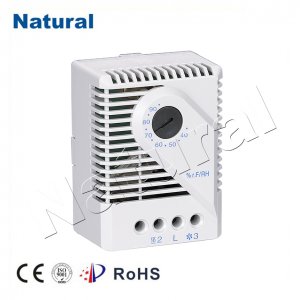文章:

Mechanical temperature switches have been a fundamental component in various industrial and domestic applications for many decades. These switches play a critical role in maintaining optimal temperatures in a wide range of systems, ensuring efficient operation and safety. In this article, we will delve into the world of mechanical temperature switches, exploring their functionality, applications, and advantages. How Do Mechanical Temperature Switches Work? At their core, mechanical temperature switches are simple yet effective devices designed to control temperature. They consist of a bimetallic strip or a coiled bi-metal element. The bimetallic strip is composed of two different metals with different coefficients of thermal expansion. As temperature changes, the metals expand or contract at different rates, causing the strip to bend. This bending motion is what activates or deactivates the switch. When the temperature rises to the predetermined setpoint, the bimetallic strip bends, making or breaking an electrical contact, depending on the switch’s design. This action can either turn on or off a connected device or trigger an alarm. The setpoint is adjustable in many mechanical temperature switches, allowing users to fine-tune the temperature control according to their specific needs. Applications of Mechanical Temperature Switches Mechanical temperature switches find applications across various industries and sectors due to their reliability and cost-effectiveness. Here are some common applications: HVAC Systems: Heating, ventilation, and air conditioning systems often use mechanical temperature switches to regulate temperature and maintain comfort levels in buildings. Refrigeration: Mechanical temperature switches are crucial in refrigeration systems to ensure that the temperature inside refrigerators and freezers stays within a safe and optimal range for food storage. Automotive: In vehicles, these switches control engine cooling fans, ensuring the engine operates at the right temperature. Industrial Machinery: Mechanical temperature switches are used in manufacturing processes to monitor and control temperatures in various equipment, preventing overheating and damage. Safety Systems: They are employed in safety systems like fire alarms, where temperature rises can trigger the activation of sprinkler systems or other emergency responses. Hot Water Heaters: These switches help maintain the desired water temperature in hot water heaters, preventing scalding or inadequate heating. Advantages of Mechanical Temperature Switches Mechanical temperature switches offer several advantages: Reliability: They are known for their durability and long service life, making them a dependable choice for critical applications. Cost-Effective: Mechanical temperature switches are often more affordable than electronic alternatives, making them a cost-effective choice for many industries. Ease of Use: Their simplicity makes them easy to install and operate, requiring minimal maintenance. High-Temperature Tolerance: They can withstand extreme temperature conditions without malfunctioning, making them suitable for harsh environments. Safety: Mechanical temperature switches are inherently safe and are often used in safety-critical systems. In conclusion, mechanical temperature switches continue to play a vital role in maintaining temperature control and safety across various industries. Their simple yet effective design, reliability, and affordability make them a preferred choice for many applications. As technology advances, electronic alternatives are gaining ground, but mechanical temperature switches remain a cornerstone of temperature regulation in countless systems worldwide.